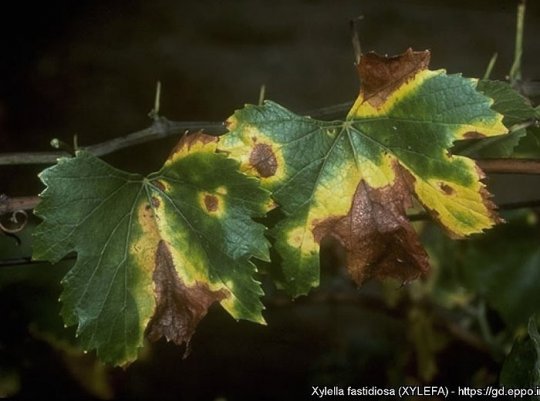What damage is caused by Pierce's disease in the vineyard?
Foliage symptoms are mainly visible during hot, dry summer periods or when there are severe water constraints. They are characterized by the appearance of partial dryness that gradually spreads to the edges of the leaf blades until the leaf is entirely affected. Leaves become scorched, necrotic and fall off.
Branches can also be affected, growing irregularly and remaining green in places.

